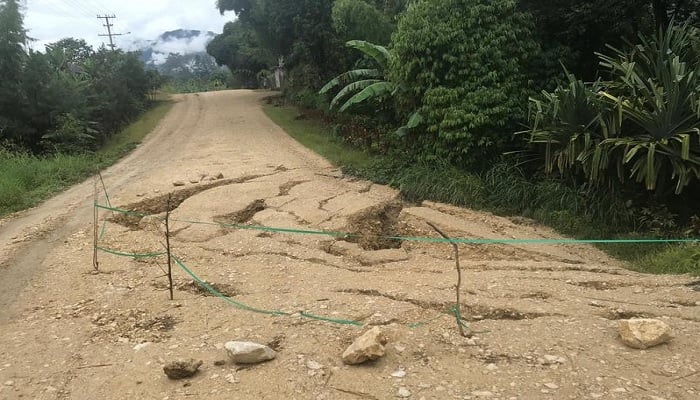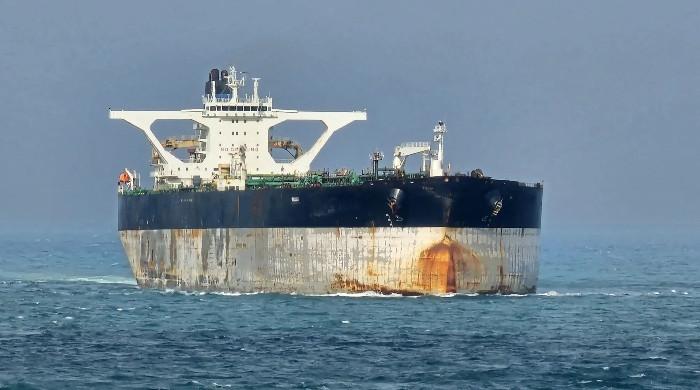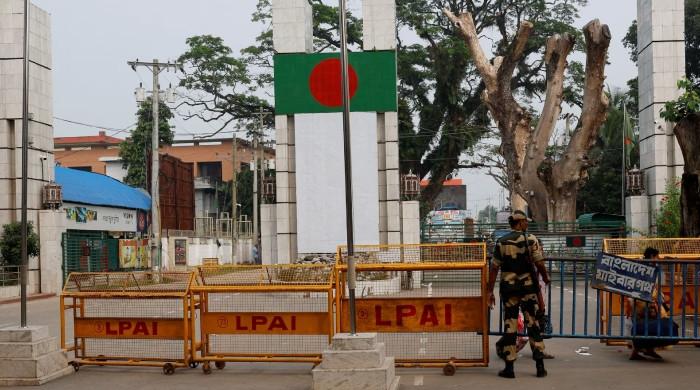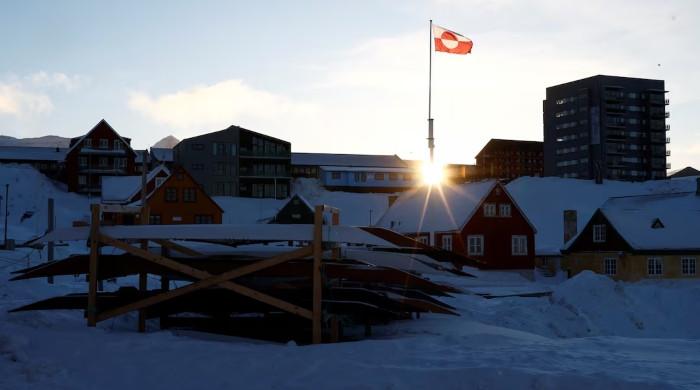TRIPLE QUAKE: After Mexico, Afghanistan seisms, Papua New Guinea also struck by 6.7 earthquake
Shortly after the initial quake, an aftershock of equal magnitude struck off the coast of Madang, as reported by the USGS
October 07, 2023

After Afghanistan and Mexico, Northeastern Papua New Guinea Saturday was also hit by a powerful earthquake with a magnitude of 6.7, according to the United States Geological Survey.
Three strong earthquakes jolted the world this morning, with tremors felt in Papua New Guinea, Mexico and Afghanistan. A 6.3 magnitude quake rocked Mexico at 11 pm on Friday (5:00 am Saturday GMT) before Afghanistan was struck by a 6.4 quake around 11 am local time (6:30 am GMT).
Powerful tremors were felt in Oaxaca, located in southern Mexico, causing car alarms to go off even in Mexico City, which is approximately 227 miles (366 kilometres) to the northwest, prompting residents to run out of their homes.
Similarly, in Herat, Afghanistan, residents spilt out onto the streets when an earthquake occurred just 25 miles (40 kilometres) northwest of the city. This initial earthquake was followed by a series of aftershocks with magnitudes ranging from 5.5 to 6.3, and later, 5.9.
This seismic event disrupted power grids and cast coastal communities into darkness. The earthquake, which had a depth of 53 kilometres (33 miles), occurred around 7:30 pm (0830 GMT) with its epicentre located approximately 56 kilometres southeast of the coastal town of Madang.
Aftershocks
Shortly after the initial Papua New Guinea quake, an aftershock of equal magnitude struck off the coast of Madang, as reported by the USGS. Fortunately, there was no indication of a tsunami threat from monitoring stations.
The tremors in Madang, a community of approximately 27,000 people renowned for its scuba diving, were sufficiently strong to knock some individuals off their feet.
Local residents reported widespread power outages, and the full extent of any damage was expected to become apparent only with the arrival of daylight on Sunday morning.
"We’ve had some of our staff falling down to the ground," a receptionist at the Madang Resort told AFP.
"The power just went down, we had to turn on the hotel generator. Tomorrow we will get the bigger picture."
Madang Lodge receptionist Jennifer Auto told AFP they had "experienced some damage" but so far "nothing bad".
The region was badly damaged by a 7.6-magnitude earthquake that struck in September last year, causing more than 400 homes to collapse across the broader Madang province.
Ring of fire
Earthquakes are common in Papua New Guinea, which sits on top of the seismic "Ring of Fire" -- an arc of intense tectonic activity that stretches through Southeast Asia and across the Pacific basin.
Although they seldom cause widespread damage in Papua New Guinea´s sparsely populated jungle highlands, they can trigger destructive landslides.
At least seven people were killed in April this year when a 7.0-magnitude quake hit a jungle-clad area in the Pacific island nation´s interior.
About 180 homes were destroyed in the heavily rainforested Karawari area, near the quake´s epicentre.
In September last year, 10 people were killed when a 7.6-magnitude earthquake levelled hundreds of homes, split roads and caused power outages across the rugged north of the country.
It was the largest quake to rock Papua New Guinea since 2018 when almost 150 people were killed following a shallow 7.5-magnitude tremor in Hela province.
Many of Papua New Guinea´s nine million citizens live outside major towns and cities, where the difficult terrain and lack of sealed roads can seriously hamstring search-and-rescue efforts.









